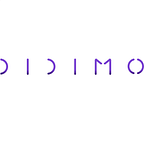How we’re making digital interactions
more human and humane
2020: Humankind has been using the Internet for 40 years now. Most people in developed countries have more friends online than in the real world — which is not a problem, it’s just a sign of the times.
Although we can now find people with common interests from around the world — creating a never before possible massive network -, we may be losing the human touch on our relationships. The lack of touch, face-to-face contacts and personal empathy contributes highly to this new reality.
With this in mind, Didimo set as its mission to break down the barriers between the digital and physical world through digital humans that represent our very own image and emotions. Unlike regular avatars, didimos (our special kind of digital incarnations) accurately represent one’s face. Features like your eye color, your freckles and even your facial hair will be precisely depicted with our technology. Your human characteristics and nuance, the qualities that make other people feel empathy, compassion and connected, will be visible to the other end, making you more than just an email, a username or a cartoon character.
We envision a world where lovers can see their better-half’s face and emotions when talking to them, where friends, family and business partners will be able to connect via holograms, while keeping each other’s features pristine.
Didimo is the result of 14 years of research in the development of virtual characters. Our core business is the automatic creation of digital humans — you can see an early result of our work on our app, that although is still on a beta version, is already able to easily deliver a digital version of yourself in less than 30 seconds — all you have to do is take a ‘selfie’ (download the Android app here).
What makes our solution truly unique is not only the short amount of time it takes to create a 3D model using only a simple picture, but also the way it gathers multiple systems that are required to create one’s digital version. 3D animation, texturizing, rigging and modeling are just a few of the features that are compiled on our solution.
Since it requires large production teams of artists, engineers, expensive hardware and software, the creation of high-quality 3D characters was the exclusive domain of Hollywood and videogame producers with deep pockets — until now. We’re in the market to revolutionize this paradigm, making our high-fidelity digital humans as easy to create as the regular cartoonish avatars that already exist in the market.
We’re aiming to do more than just leaping over the physical–digital barrier. The technology can (and we are working towards to) be used in several fields, from Entertainment and Retail to Healthcare and Education.
In retail, for instance, we’re working with some companies to promote the ‘virtual try on’. The end goal is to revolutionize the e-commerce experience, making it more immersive and meticulous through digital versions of the customers. This way, users will be able to virtually see themselves with the clothes before ordering them — hence reducing the return of goods.
All in all, we believe in a more human and humane world, where digital communication might be a way to building bridges, not walls, to give a voice to someone who’s not able to communicate with their peers and to promote equality.
